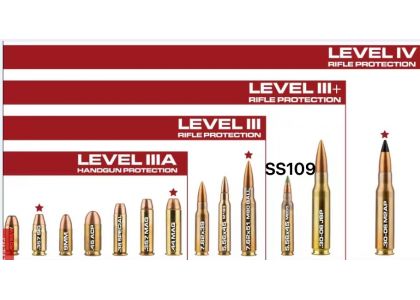

Ballistic protection levels are classified based on the power of firearms that ballistic-resistant equipment can withstand. These levels are usually set by national standards organizations or military agencies and are used to guide the design and manufacture of body armor, vehicles and other equipment. Different countries and organizations may have different classification standards and naming methods, but generally speaking, bulletproof levels can be divided into the following categories:
NIJ Standards (National Institute of Justice): This is the most commonly used set of standards for testing ballistic materials at the civilian and law enforcement levels and is widely used around the world.
IIA: Resistant to 9mm and .40 S&W pistol rounds.
II: Resistant to 9mm and .357 Magnum pistol rounds.
IIIA: Resistant to .357 SIG and .44 Magnum pistol rounds.
III: Can withstand 7.62mm NATO bullets (such as M80 bullets).
IV: Able to withstand .30 caliber lead core armor penetrating bullets (such as M2 AP bullets).
Russian/GOST standards: Standards used by Russia and its allies, which are different from NIJ standards.
Level 2: Equivalent to NIJ Level II, resistant to pistol bullets.
Level 3: Can resist ordinary ammunition of AK-74, AKM and other light automatic weapons.
Level 4: Ammo that can withstand sniper rifles, such as 7.62x54mmR.
Level 5: Can withstand some high-power rifle bullets.
Level 6: Provides higher protection against heavy rifle bullets.
European standards (EN 1063, etc.): Mainly used to evaluate bulletproof glass and transparent armor materials.
It is divided into multiple levels, from BR1 to BR7. BR1 is the lowest protection level and can withstand .22 LR pistol bullets; BR7 is the highest protection level and can withstand multiple 7.62x51mm NATO bullets.
Chinese standards: China also has its own standards for bulletproof materials and equipment, such as GA141-2010 "Police Bulletproof Jackets", which cover a variety of threat levels from pistol bullets to rifle bullets.
When selecting equipment with the appropriate level of ballistic protection, you need to consider the types of threats you may face in actual application scenarios, as well as factors such as the weight, comfort, and cost of the equipment. Higher levels of ballistic protection provide better protection, but are also heavier, bulkier and more costly.